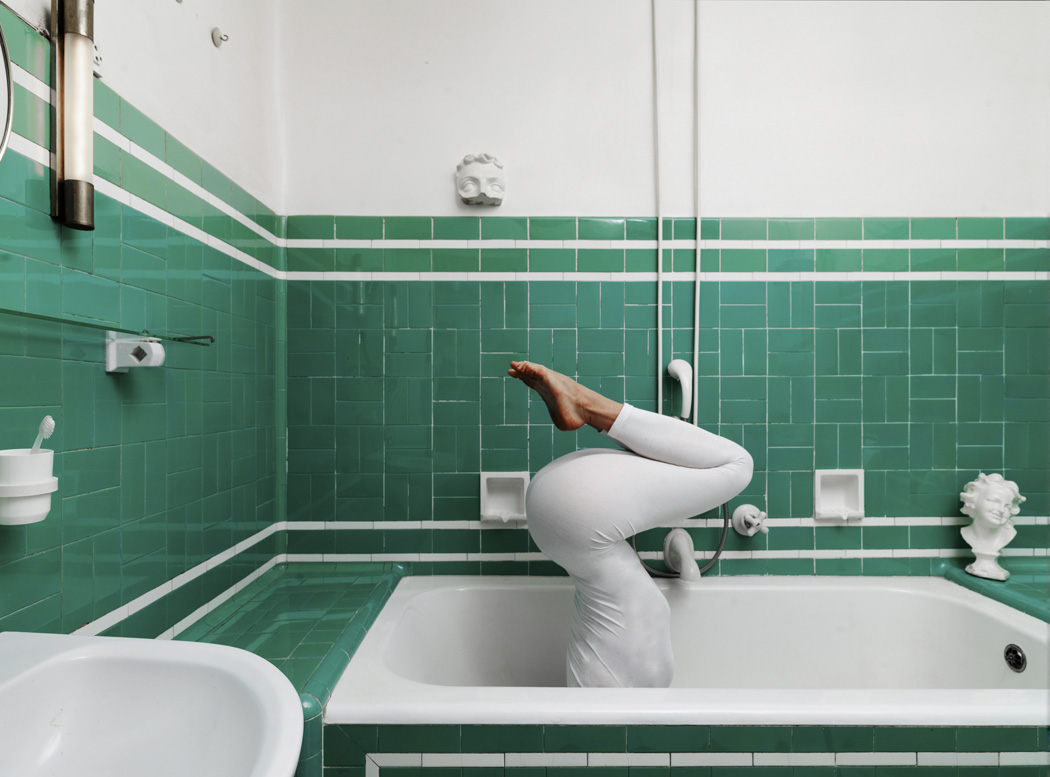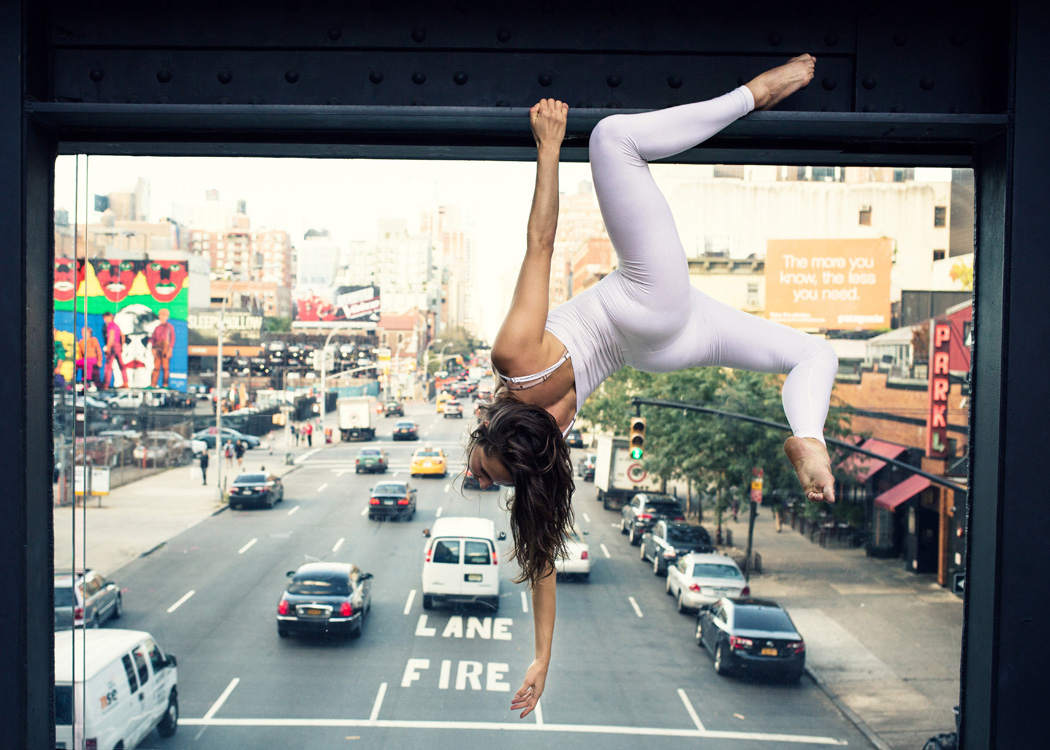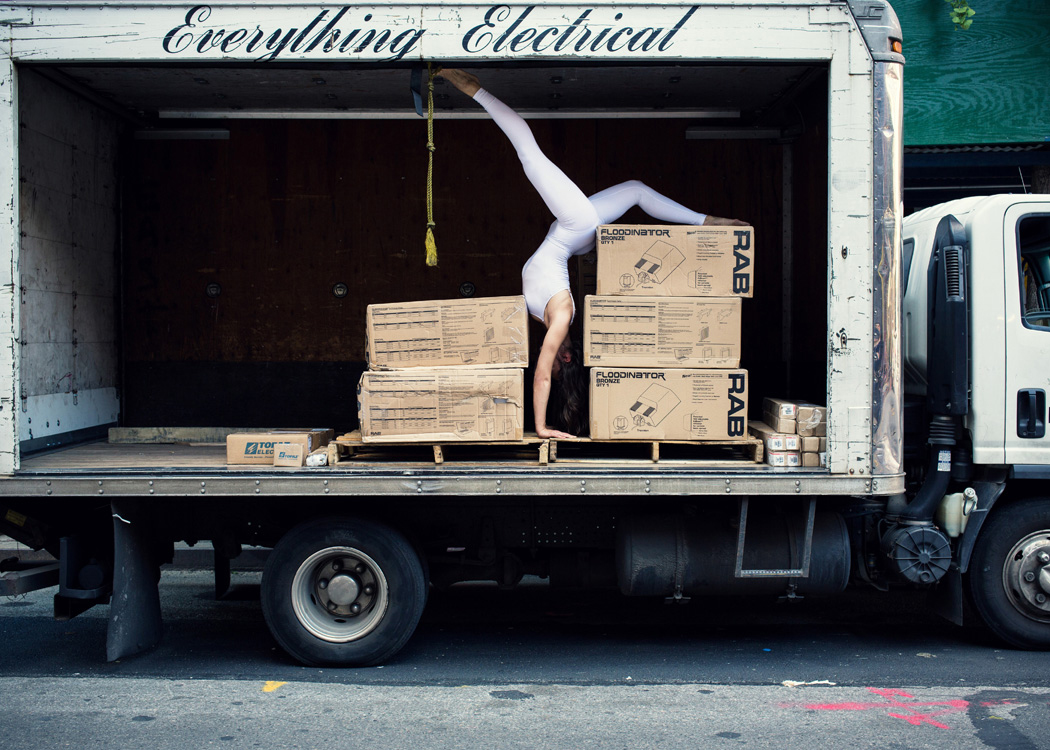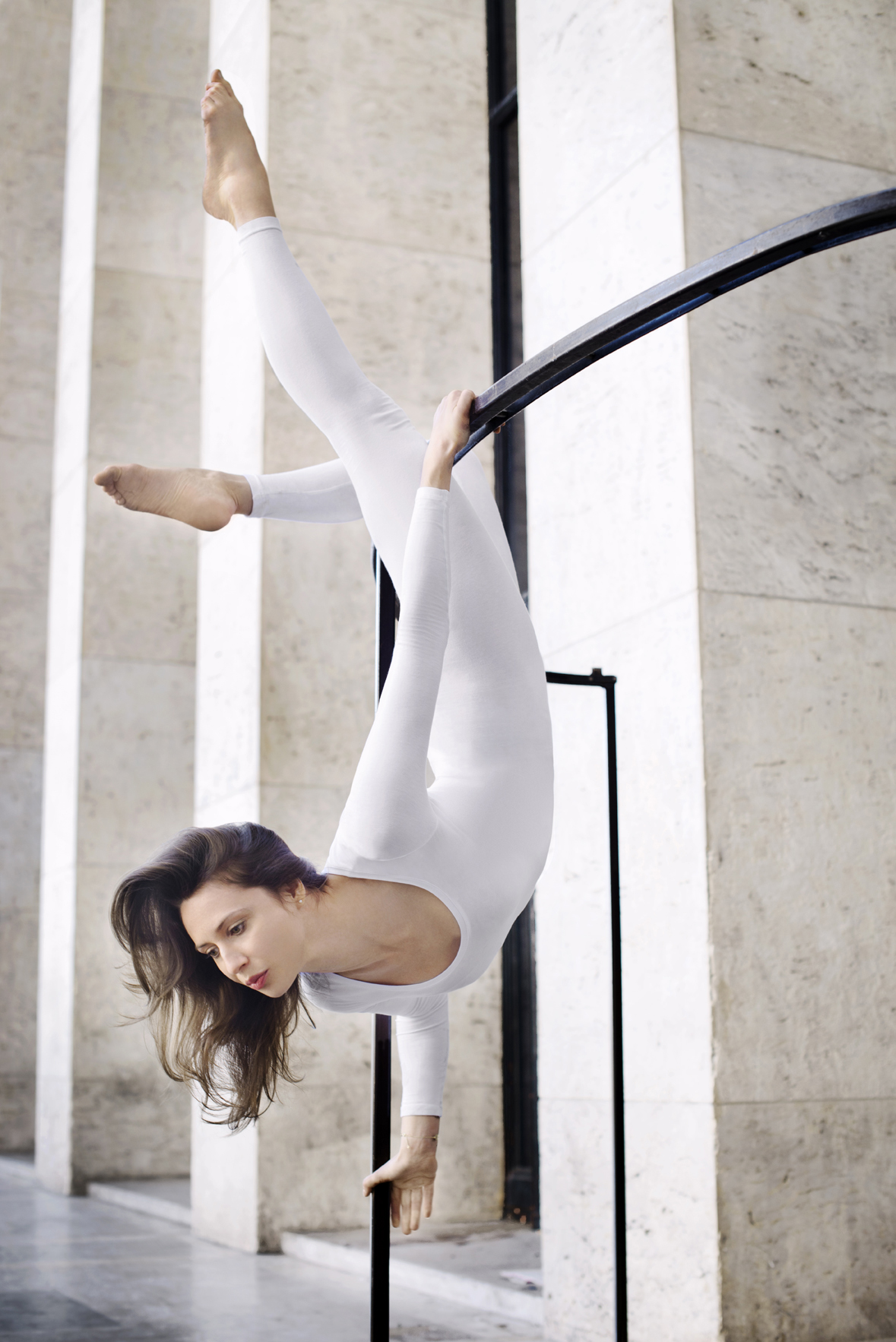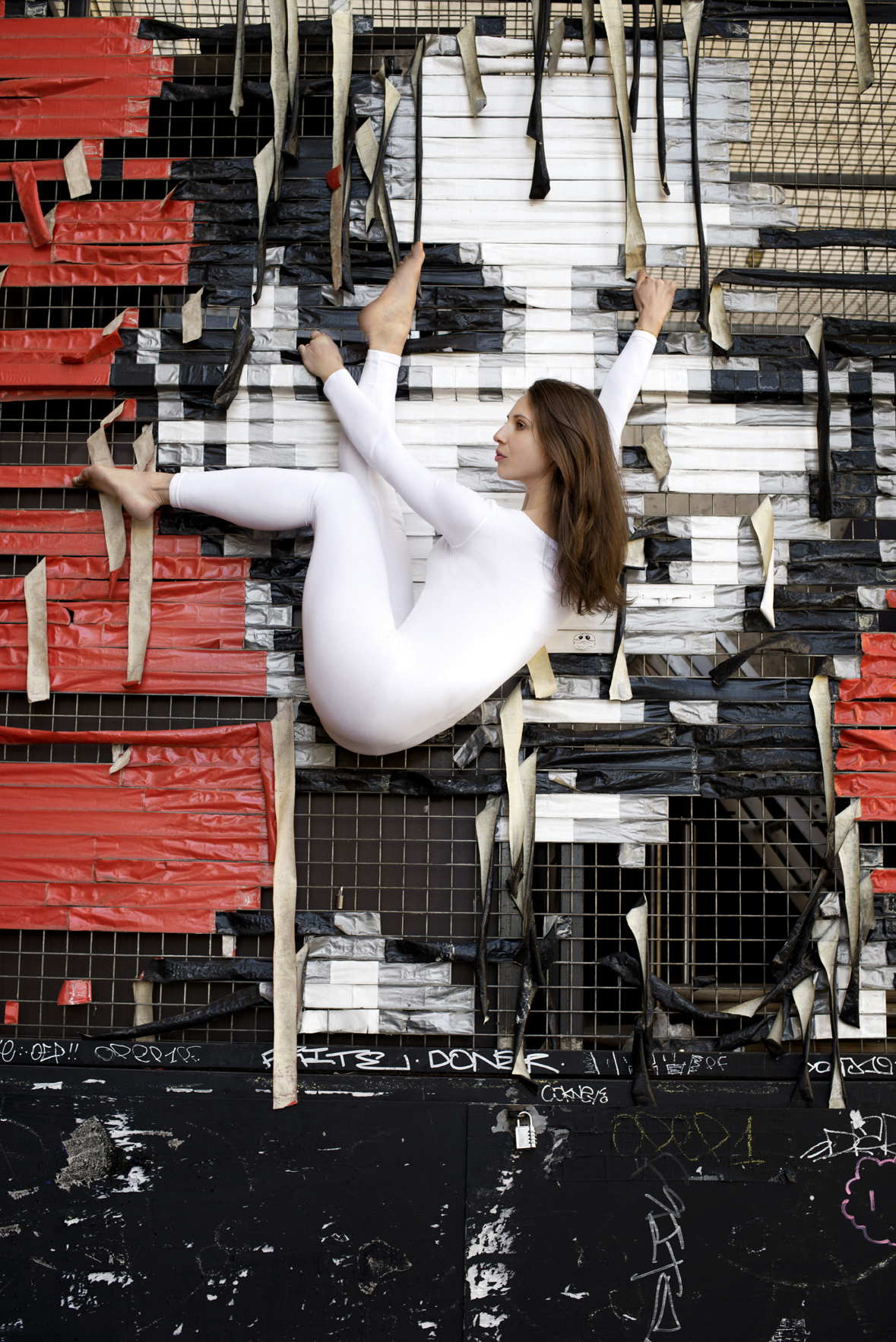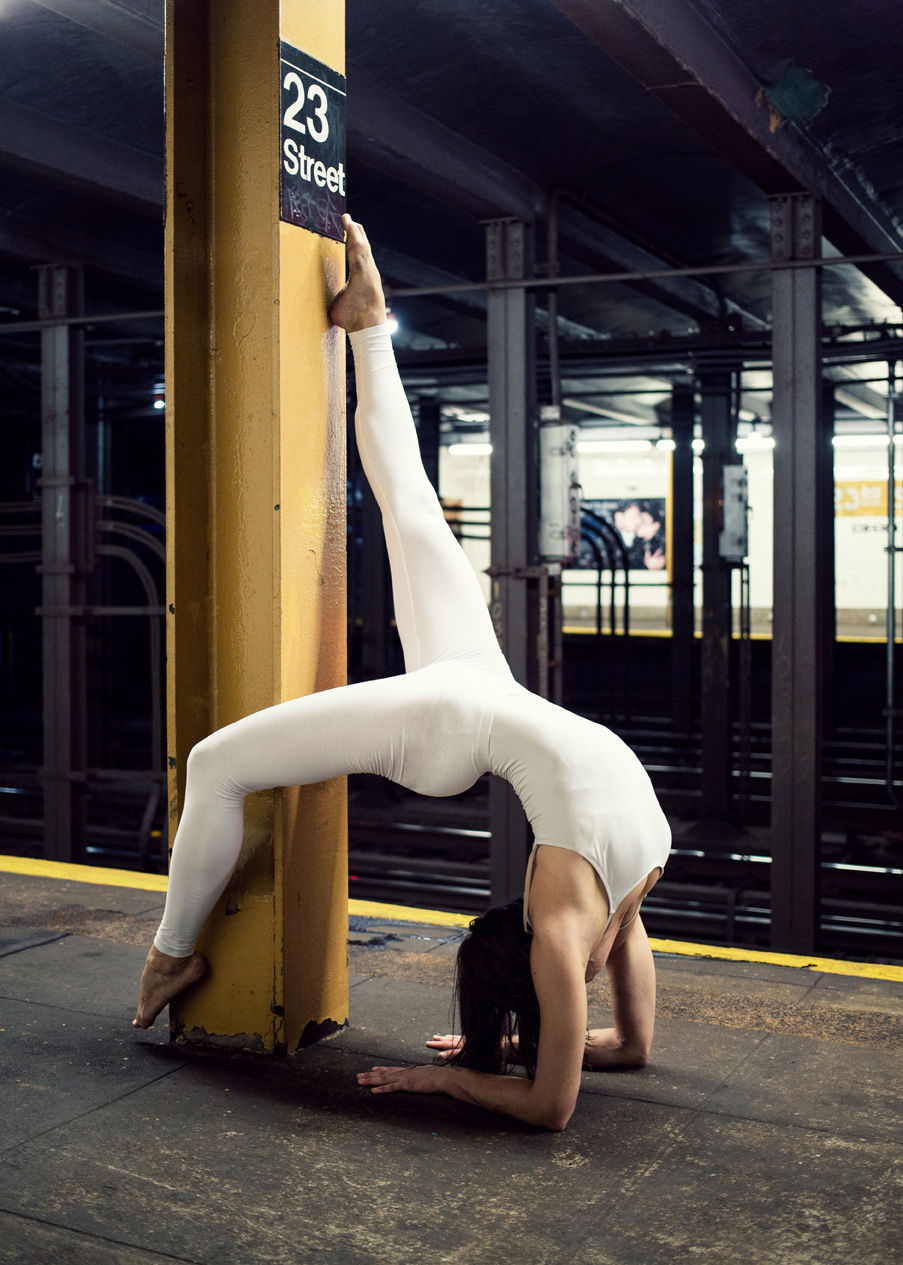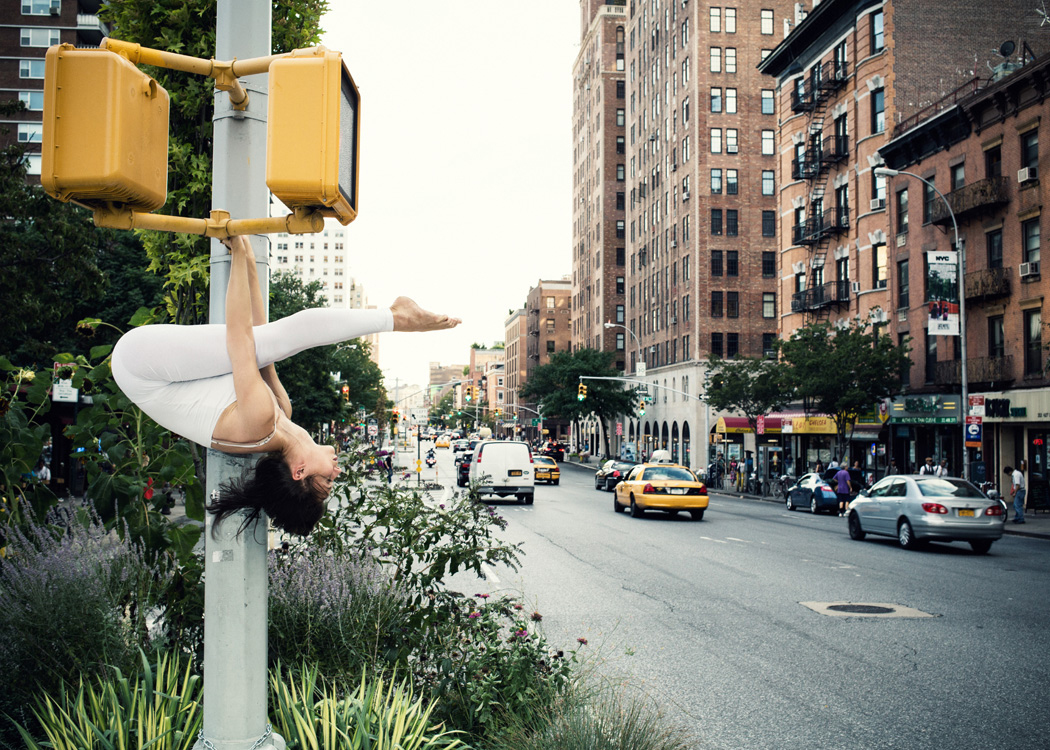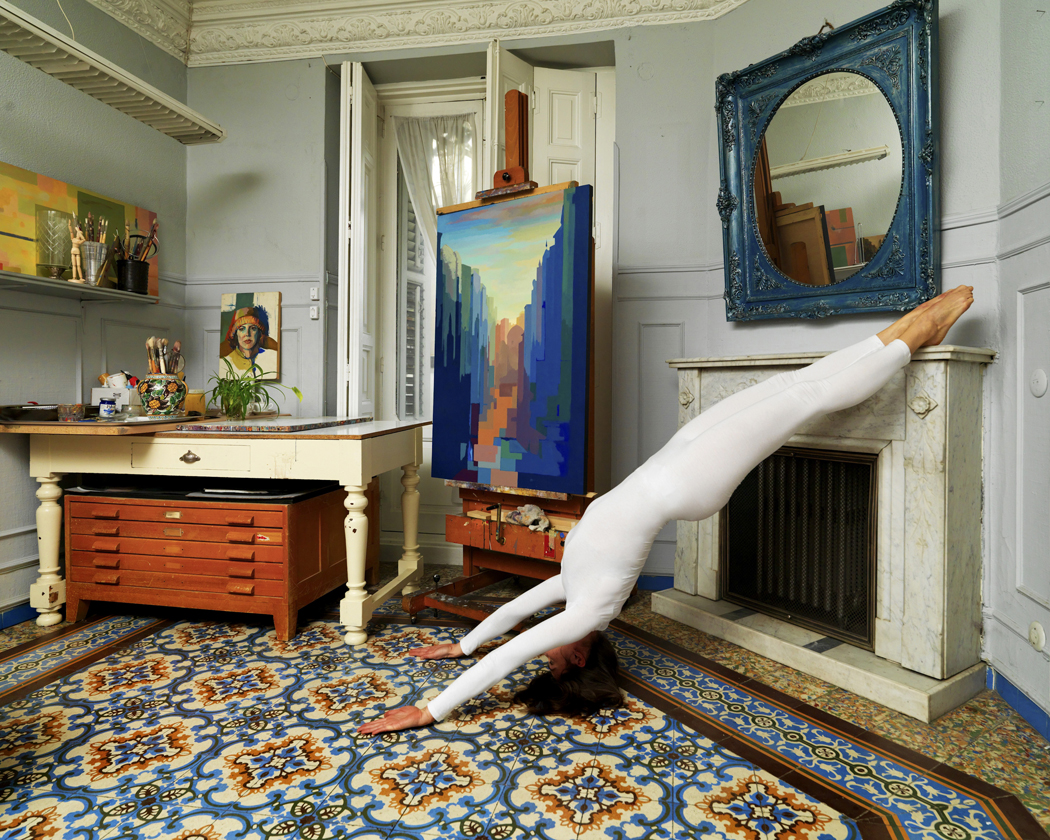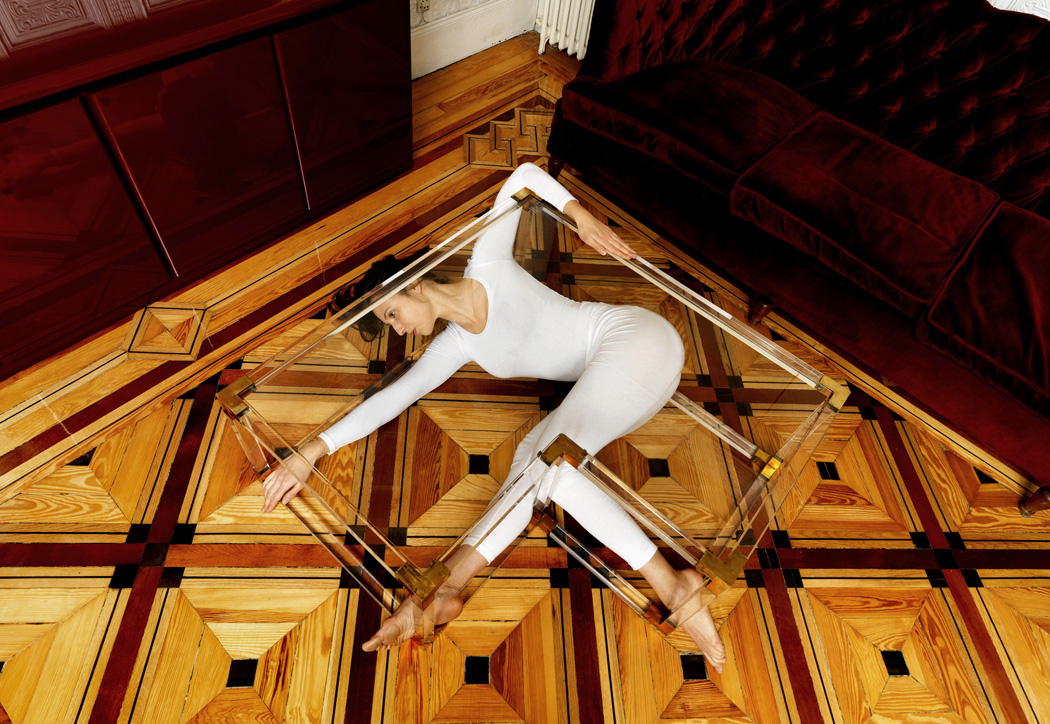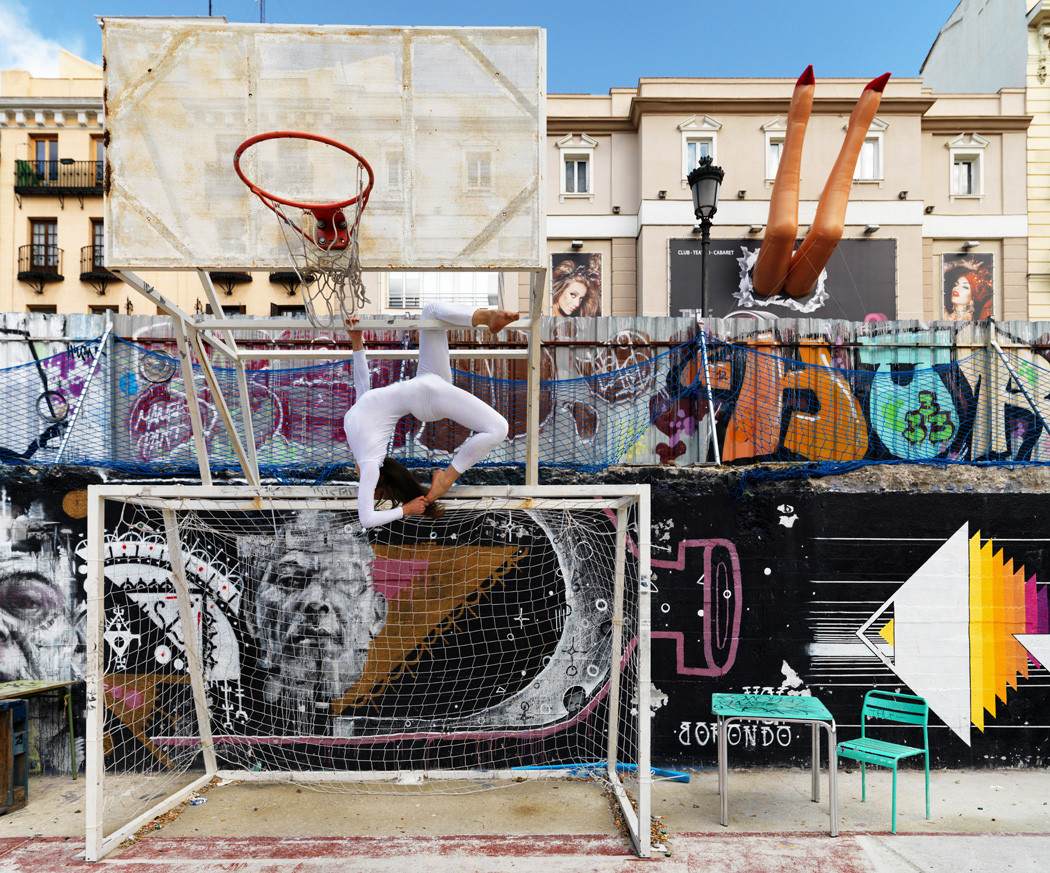It is not yoga as such. It is an architectural experiment changing the way we experience every day situations in an urban environment by focusing on our body and senses. The goal of The Urban Yoga is to develop a method for designing space based on subconscious sensory experience. It is not geometry and function, but what we touch, smell, taste and hear without even realizing that defines most whether we feel good or bad in a certain environment and at a certain time.
General analyses of space mostly deal with geometry and function; so in order to design urban space with sensuous human in mind we need complementary methods that analyze the subconscious sensory experience.
The Urban Yoga photo series are metaphors for the experiment: how do we perceive space if we surrender ourselves to it with our whole sensuous body and give ourselves up to feelings that are running through space? Moreover, they are encouraging urban citizens to claim back their city and call for urban environment that not only provides the world with pragmatic buildings or on the contrary with buildings that are visually stunning, but functionally useless, but to express fundamental truth of the human condition, including dreams, imagination and desires: not only of the designers themselves, but also of those, who use it on a daily basis.
As the very symbol of intense urban environment and life-style, New York was the ideal place to launch The Urban Yoga photo series, later taken also in Paris, Madrid, and Ljubljana. The Urban Yoga project is currently featured on Kickstarter, raising funds for the publishing of The Urban Yoga book and to further on develop The Urban Yoga method for designing space. We would very much appreciate for your support and sharing the good word about The Urban Yoga.
About Anja Humljan
Anja Humljan is a freelance architect widening the borders of architecture by allowing her projects to flow freely into the field of photography, design, video art and performance. Her interest in interdisciplinary and multimedia approach to architecture took her all around the globe. In Slovenia she studied architecture, in Denmark digital design, in Australia photo-media, video art and sound recording. Moreover, she pursued projects in New York, Madrid and Paris and is also known as a radio presenter, voice actor and yoga teacher. As a student she exhibited at Venice Architecture Biennial, together with her Danish colleagues. At that time she started to develop her own view of space and created a laboratory for experimental architecture called Space Potential. Since then she has explored various tools, media and invented unique methods, which help her spread the idea that architectural space is much more than just geometry and function and spans further away from what we can see and measure.
Anja Humljan’s current occupation is an architectural research called The Urban Yoga. As an architect and yoga teacher she believes contemporary cities will remain only if we designed spaces that aim towards achieving a balance of sensory information: places, where what we see is in balance with what we smell, touch, taste and hear. Just like in yoga, where our body becomes our special place, the urban environment also has a potential to become a place of self-reflection and self-realization. A place, where you feel good. A place that lights up your imagination, brings up memories, tells stories and nests your dreams. Considering this, she believes architecture is ripe for rebirth.
Anja Humljan is based in Europe working on her latest project The Urban Yoga. The Urban Yoga is not yoga as such. It is an architectural experiment changing the way we experience every day situations in an urban environment by focusing on our body and senses. The goal of The Urban Yoga is to develop a method for designing space based on subconscious sensory experience. It is not geometry and function, but what we touch, smell, taste and hear without even realizing that defines most whether we feel good or bad in a certain environment and at a certain time. General analyses of space mostly deal with geometry and function; so in order to design urban space with sensuous human in mind we need complementary methods that analyze the subconscious sensory experience. [Official Website]



